Gansu Hamster: Some Common Facts
The Gansu hamster (Cansumys canus) is a small, arboreal rodent native to China’s Gansu province, known for its distinctive grayish-brown fur and solitary nature. It thrives in hilly, forested environments and requires specific care related to its habitat, diet, and breeding habits.
- Native to Gansu Province, China, and discovered in 1928.
- Small size (3.9 to 6.9 inches), weighs 2.1 to 4.2 ounces.
- Solitary, prefers dry, arboreal, forested habitats.
- Diet includes grains, seeds, insects, and fresh vegetables.
- Lifespan averages 2 to 3 years.
- Requires careful breeding and monitoring due to fragility of newborns.
- Needs well-ventilated, spacious caging with deep bedding for digging.
In contrast to the well-known hamster species, the Gansu hamster is still a mystery to many people. Despite its other rodent relatives, it is a singular specimen due to its intriguing behaviors, distinctive physical features, and complex history. These are mysterious and intriguing kinds of hamsters. Let’s have a closer look at Gansu hamsters.
History Of Gansu Hamsters
The Gansu hamster is a rodent found in China’s Gansu Province. Another name for it is “Ganzhou.” Scientists and zoologists first found it in 1928. In 1931, after being adequately classified by scientists Gustav Donndroff von Rosenhof, the species was acknowledged internationally.
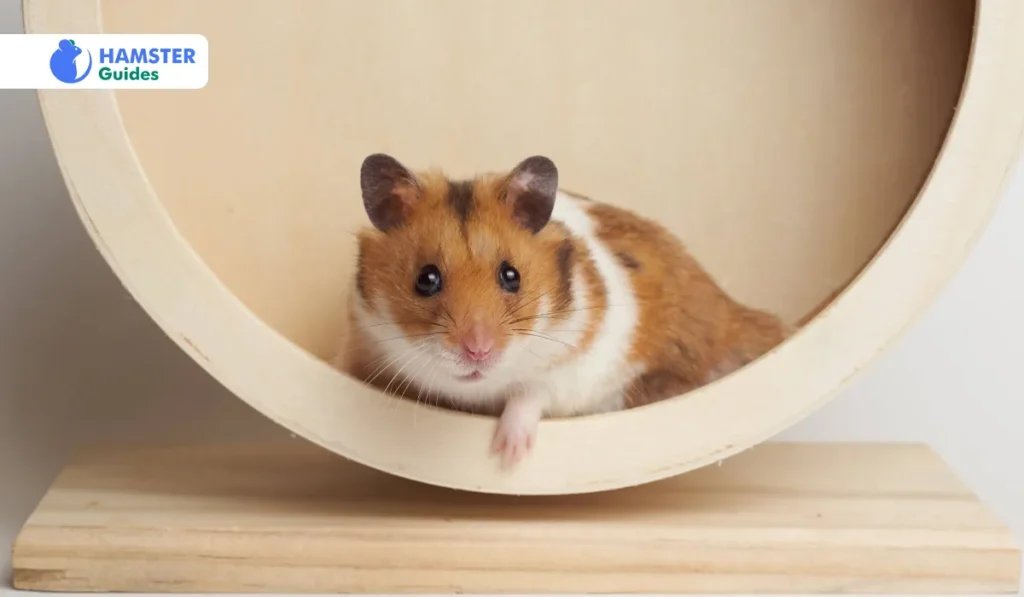
Read More: The Fascinating World of the Chinese Hamster
The Scientific name of the Gansu hamster is “Cansumys Canus.” The Gansu hamsters are members of the Cricetidae family, and their genus is Cansumys. These cute young hamsters have a body covered in grayish-hued fur. The Gansu hamsters, which are native to China, are kept as pets in homes, while the Gansu hamsters that are found in the wild are Arboreal.
Arboreal species are primarily found in deciduous forests that round hilly regions of some Chinese provinces. The Gansu hamster dislikes the company of other hamsters. So, if you want to own a Gansu hamster as a pet, keep them apart from each other, as it may lead to severe stress.
Read More: The Ultimate Guide to Campbell’s Dwarf Hamsters
Gansu Hamster Appearance And Characteristics
At first look, the Gansu hamster can appear to be just another rodent, yet upon closer examination, it has a symphony of intricate details. The bodies of Gansu hamsters are short and elegant, usually making them smaller than many other hamster types.
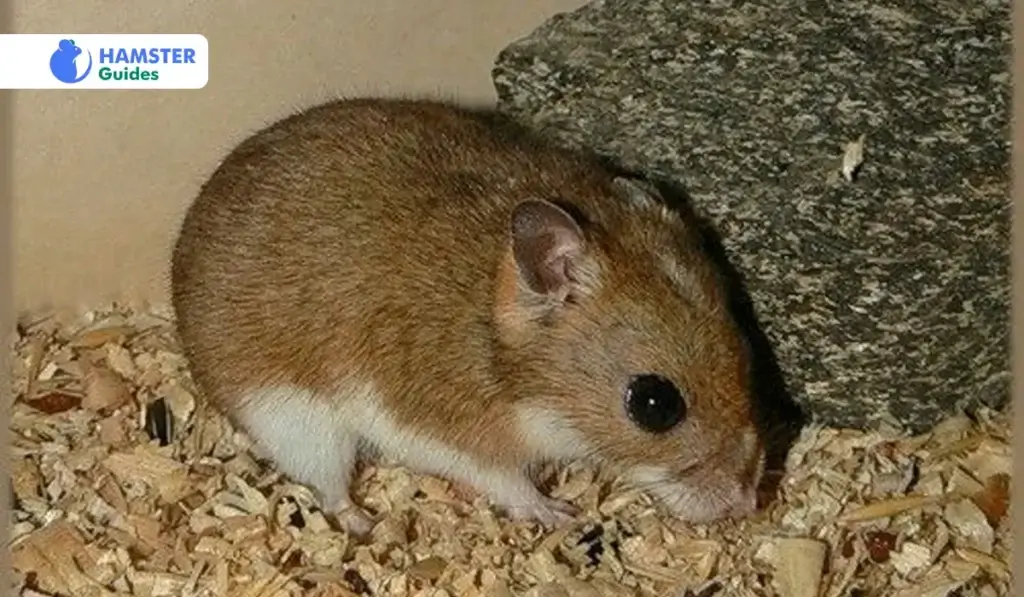
This helps them move quickly through their environment, particularly while running from possible predators or hunting prey.
Their fur is a pleasing combination of earthy colors, frequently ranging from greys to browns with sporadic, faint white undertones. In addition to acting as a form of defense against possible predators, these color patterns also represent the environments they live in.
Read More: Are Hamsters Nocturnal?
Their beady, tiny eyes are alert, accurately picking up on motions. Their rounded ears give them a perceptual advantage over their surroundings because they can detect the slightest sounds.
The Gansu hamster stands out from other tiny pets thanks to its distinctive features. Let’s explore their unique characteristics.
| Hamster Characteristics | Specifics |
| Scientific Name Of Gansu Hamster | Cansumys canus |
| Colors | Gansu Hamster |
| Lifespan | Two to three years |
| Adult Size | 3.9 to 6.9 inches |
| Weight | 2.1 to 4.2 ounces in weight |
| Colours | Brown with yellow undertones |
| Careful Handling | It’s tricky in terms of caring for them. |
| Nutrition | Grains, seeds, insects, and vegetables |
| Minimum Habitation Size Of Gansu Hamster | 360 square inches |
| Unique Elements | Distinct marks and patterns on fur. |
Fun Fact: The Gansu hamster is skilled at storing food like many other hamster breeds. They will gather and hide extra seeds in their tunnels to survive shortages.
Benefits Of Gansu Hamster’s Physical Features
In all of its wisdom, nature never creates something aimless. The morphological characteristics of the Gansu hamster provide them with multiple evolutionary benefits, specially designed to meet the demands of their environment.
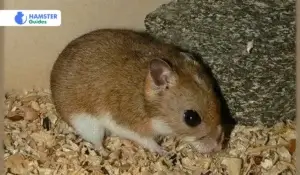
The Gansu hamster’s small size enables it to burrow into the ground efficiently, building complex tunnel networks that operate as both homes and escape routes. In addition to serving as a critical means of concealment, their earth-toned fur also works as insulation. Because of the erratic weather in their natural environments, this fur helps them regulate their bodies’ temperatures.
Due to the positioning of their small, keen eyes, they have a larger field of vision, which is essential for identifying both prey and predators. Their robust, flexible leg structures let them run, climb, and dive efficiently.
Read More: Can Hamsters See in the Dark?
Combined, these characteristics not only characterize the physical attributes of the Gansu hamster but also tell a story of adaptability, survival, and the unstoppable march of evolution.
We can better grasp how the Gansu hamster has flourished in its particular environmental niches by comprehending its physical traits and the benefits they conferred.
Reproduction Cycle Of Gansu Hamster
Similar to other hamster species, Gansu hamsters have certain reproductive traits of their own. Gansu hamsters typically attain sexual maturity at four to five weeks.
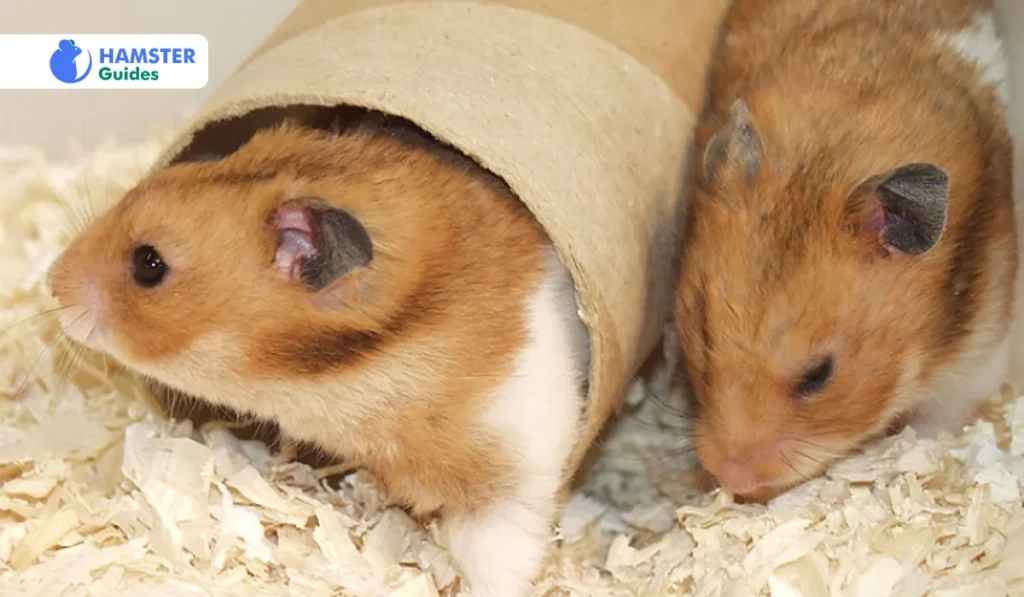
However, to protect the well-being of the mother hamster and the children, it is best to wait as long as they are a little older before beginning the breeding process.
Female Gansu hamsters usually experience estrus or go into heat after four days. This is the time when they are ready for mating. Gansu hamsters need approximately 18 to 21 days to gestate after being pregnant. Giving the expected hamster extra nutrition and a calm environment is critical.
Four to twelve puppies can make up an average litter. Because they lack hair, are blind, and are incredibly fragile, newborns need protection from cold. The puppies can be nursed after the mother feeds and tends to them for roughly three weeks.
Keeping the mother’s health under observation and limiting disruptions during this time is critical. Male and female Gansu hamsters must be kept apart from one another for five weeks once they reach sexual maturity to avoid inbreeding.
The Patterns Of Breeding In Gansu Hamsters
From their breeding practices to their maternal impulses, let’s examine four essential ideas that clarify the intriguing breeding habits of Gansu hamsters.
Seasonal Breeders
Since they time their reproductive processes to coincide with environmental cues, they are categorized as seasonal breeders. Throughout the summer months, when food supplies are abundant and the environment is favorable for raising children, breeding usually takes place.
Behavior In Territories
In their period of reproduction, male Gansu hamsters sometimes compete with one another for the attention of the females, exhibiting territorial tendencies. They use utterances and odor markings to demarcate their territory and send signals to prospective mates and competitors.
Caring For Mothers
Maternal care requires a great deal of work from female hamsters. A group of pups is born in the mother’s womb after about 20 days of pregnancy. She gives the hairless and blind puppies warmth, cover, and food.
Read More: Do Hamsters Eat Their Babies?
Pairings That Are Monogamous
Like certain other animals, they typically form monogamous couples. The male and female stay together for the reproduction period after they have connected. This cooperative strategy helps the young have a better chance of surviving and keeps their social structure stable.
Additional Information: Gansu hamsters use a range of noises to interact with one another, even though they might not be as vocal as certain other rodents. Low growls and squeaks are examples of it.
Best Practices Of Responsibly Breeding
There needs to be more than just understanding the reproductive cycle to start a breeding quest. Moral considerations and obligations need to be made.
Raising the Gansu hamsters requires a significant commitment. It is an undertaking that calls for preparation, expertise, dedication, and, most importantly, affection and admiration for the species. The health and joy of the hamsters are guaranteed by ethical breeding methods, which also benefit the pet community.
Pro Tip: Gently introduce new smells into your hamster’s surroundings to avoid stress. This can involve cleaning their cage with non-scented materials or massaging your hands over their bedding.
Diet And Nutrition Of Gansu Hamsters
The Gansu hamster is not an exception to the rule that an animal’s nutrition is the primary factor in determining its overall health and lifespan. This little animal has unique and complex dietary preferences since it has developed to survive on particular food items found in its natural habitat.

Understanding the eating patterns and nutritional needs of the Gansu hamster is crucial for researchers and prospective pet owners. Let’s explore what they need for a well-balanced diet.
Fresh Vegetables
It is essential to feed them fresh vegetables in their diet. Leafy greens improve general health since they are high in fiber and vital vitamins such as spinach, lettuce, and kale.
Read More: Can Hamsters Eat Lemon?
Different Healthy Fruits
Fruits are a delicious treat. However, they contain sugar, so they should only be consumed in moderation. As occasional treats, serve tiny servings of fruits such as apples, apricots, berries, and pears.
Must Read: Can Hamsters Eat Pears?
Grains And Seeds
They are inherently drawn to grains and seeds.

They eat a lot of prepackaged hamster mix, which includes different seeds like pumpkin, sunflower, and flaxseed.
Read More: Can Hamsters Have Sunflower Seeds?
Source Of Protein
For these hamsters to maintain their development and energy, they need protein. This demand is met by giving them regular treats like insects like mealy bugs and crickets.
Read More: Can Hamsters Eat Grasshoppers?
Water In Fresh Form
Their lack of access to clean, pure water cannot compromise their diet. Maintain a steady supply of water in a hygienic, conveniently located container.
Read More: How Long Can Hamsters Go Without Water?
Hay As A Fiber Source
Premium hay provides fiber to promote oral health and ease digestion. Timothy hay is an excellent choice for them to chew on and support intestinal health.
Organic Food Gathering
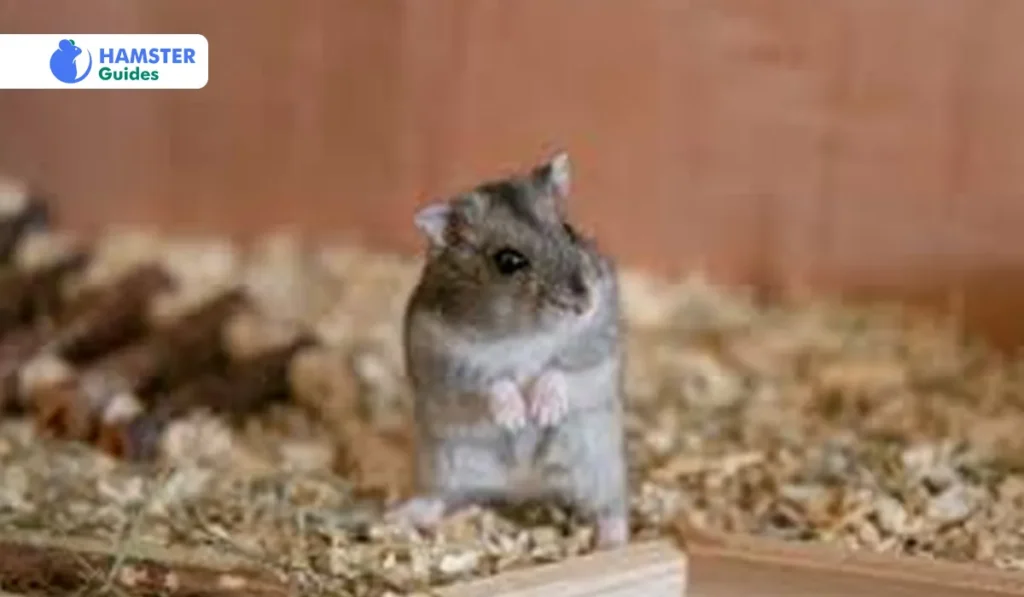
You may replicate their untamed eating habits by distributing food over their enclosure. This keeps them active by promoting physical and psychological stimulation.
Read More: How Long Can Hamsters Go Without Food?
Control Portioning
To avoid weight gain and nutritional imbalances, serve suitable portions. Depending on their age, degree of activity, and general health, modify their diet.
Pro Tip: By giving extracurricular activities like hidden goodies, making obstacles to climb, or puzzle items for playing, you may keep your hamster from getting bored and stimulate their intellect.
How They Live In Wild And Captivity?
Within the range of hamster breeds in wild and tame environments, the Gansu hamster fills a specific niche. Although native to a particular area, their persistence and flexibility have enabled them to flourish under various circumstances.
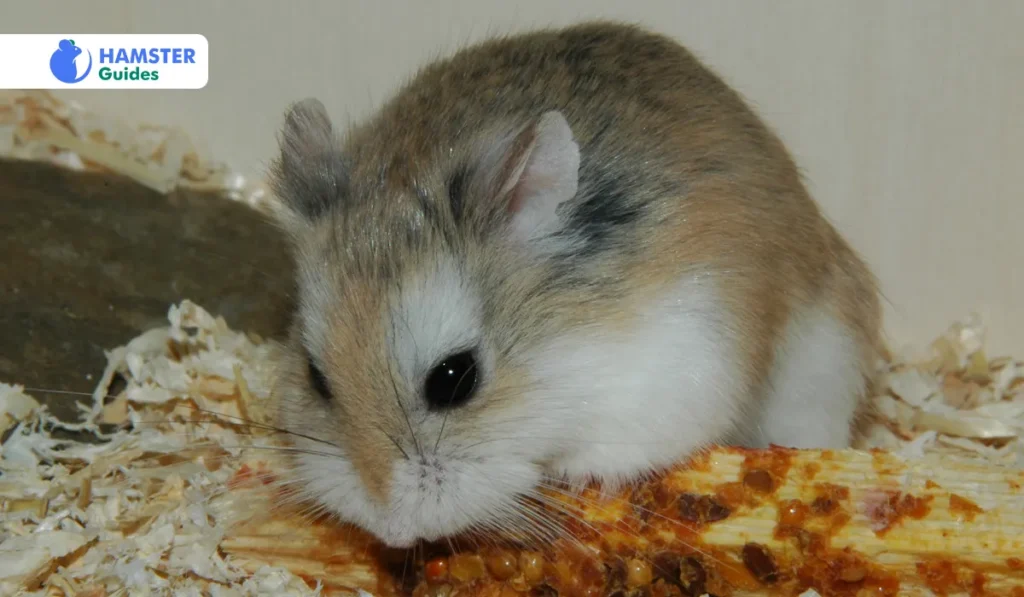
Because of their specific demands and traits, they might not always be the first option for inexperienced pet owners.
However, those who have had the honor of raising a Gansu hamster frequently talk of an exceptionally fulfilling bond. Though not as common as other hamster species, a fan base that appreciates their uniqueness indicates their existence in homes.
Read More: Do Hamsters Live in The Wild?
The adaptive abilities and habits of the Gansu hamster in the wild provide an accurate depiction of a creature that is acclimated to its surroundings. Their natural environments provide them with resources and obstacles that influence their everyday lives and development. A natural environment offers priceless insights into the true nature of the Gansu hamster, which is a combination of sensitivity and persistence.
The Health And Well-Being Of Gansu Hamster
Caring for a Gansu hamster entails more than just giving it a healthy habitat and food. It takes a sharp eye for any health problems and the expertise to handle them to ensure their well-being. Health issues can arise with Gansu hamsters, just like with any pet.
On the other hand, their general longevity and wellness can be significantly improved by being aware of these problems and taking an active approach to their treatment.
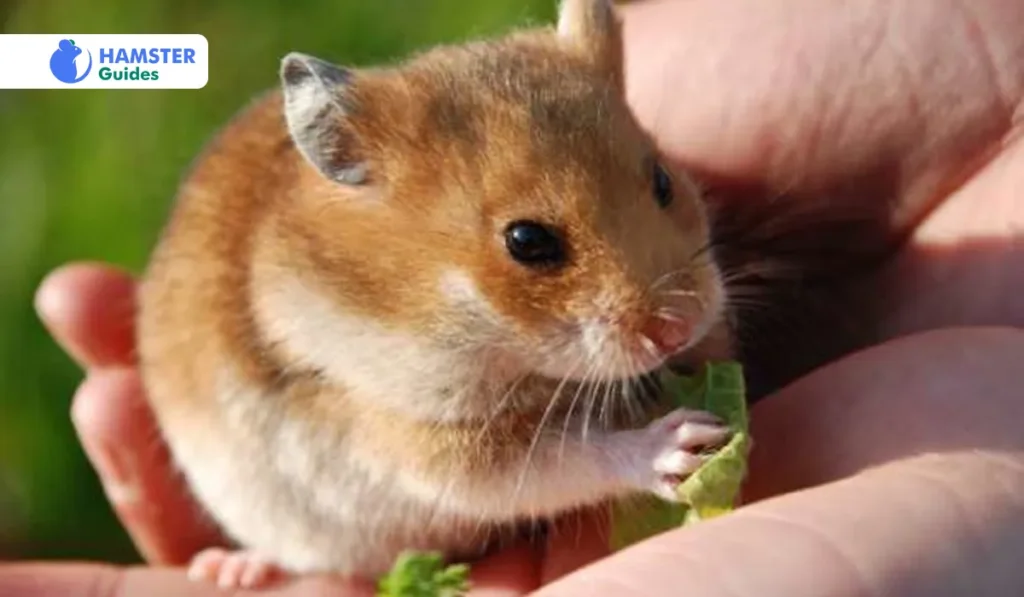
This section delves further into the health-related landscape of the Gansu hamster, stressing the importance of preventive actions as well as signals that point to the need for medical attention when needed.
Recognizing Possible Health Issues And Appreciating Preventive Care
Despite its tough exterior, the Gansu hamster may encounter various health issues. Here, we will see their health hazards and ways to prevent them.
Respiratory Problems: Respiratory issues include breathing difficulties, nasal discharge, and sneezing. Preventive measures include making sure the environment is well-ventilated, dust-free, and irritant-free.
Dental Problems: The teeth of hamsters are constantly growing. Giving them chew toys will assist in wearing them down and stop overgrowth, which can result in viruses or trouble eating.
Wet Tail: This gastrointestinal condition is frequently brought on by bacterial infections or stress. Stress reduction and sanitation can lower the danger.
Skin Conditions: Ringworm, mites, and other skin problems might occur. Initial detection can be aided by keeping their surroundings clean and looking for any modifications in their skin or fur.
Growth And Tumors: Keeping a close eye on your hamster might help you find any unforeseen lumps and bumps. Early identification and guidance may be essential.
Proactive Measures: It is imperative to take proactive measures. Appropriate preventive strategies include keeping the cage clean regularly, giving it new food and water, and reducing stressful conditions. Furthermore, doing routine health checks—that is, carefully examining your hamster to look for any indications of pain, injury, or disease—can be pretty beneficial.
Signals Indicating Veterinary Attention
There may be times when the Gansu hamster has to see a veterinarian, even with the best preventative care. Here are a few indicators that it is time to visit the vet.
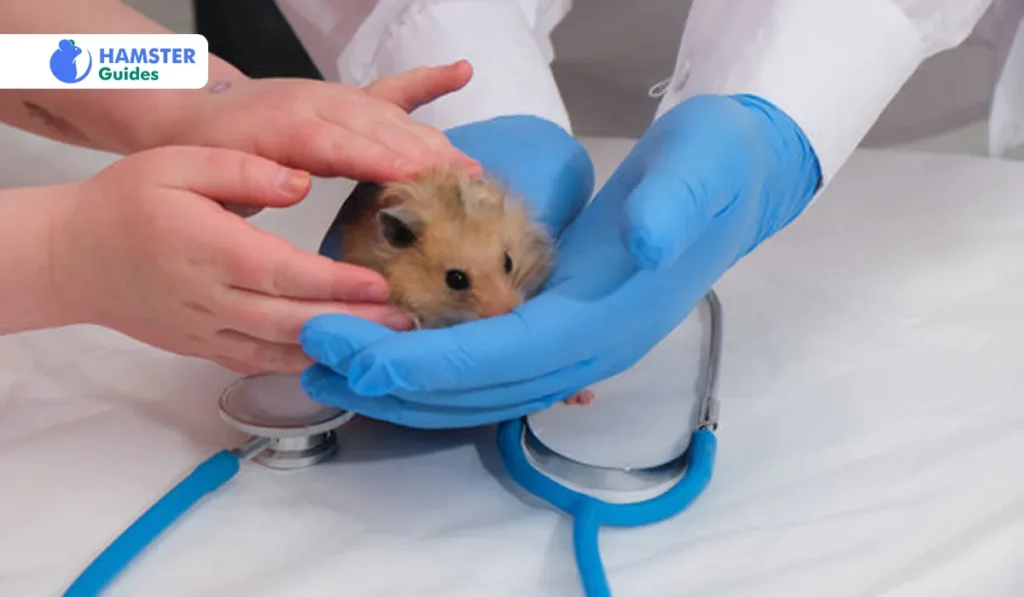
Digestive Problems: Constipation or diarrhea that does not go away, primarily when appetite loss supports it, must be treated.
Physical Indications: Prominent injuries, swelling areas, abrupt weight loss, and bald patches are all strong candidates for a veterinarian visit.
Behavioral Alterations: Your hamster may be experiencing an underlying problem if they exhibit deficient levels of energy, aggression, or changes in their feeding or drinking habits.
Respiratory Discomfort: Recurrent infections or other respiratory problems may be indicated by constant coughing, sneezing, or difficulty breathing.
Trouble in movement: Your hamster may suffer from a neurological issue or may have sustained an injury if it exhibits symptoms of stumbling around, difficulty moving, or lack of coordination.
It is always advisable to stay on the side of safety and get advice from a veterinarian if you are unsure of your hamster’s health. They may offer advice, carry out required examinations, and administer therapies to guarantee the well-being and ease of your Gansu hamster.
Grooming Of Gansu Hamster
Creating the best possible setting for grooming and care is essential to their well-being. Certain grooming routines require extra attention for these tiny adventures.
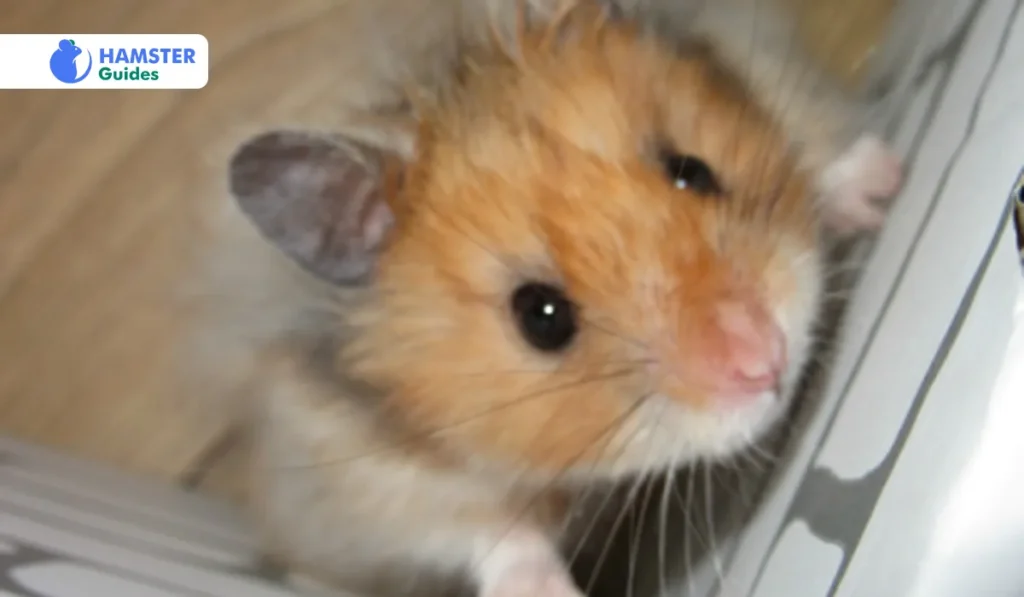
Dental Care: To maintain healthy teeth, allow people to chew on their food. They gnaw on hardwood, mineral barriers, and secure stems to assist in wearing down their teeth.
Nail Care: make sure the habitat has a rough surface, like a sandpaper-coated platform. Because of this, individuals require fewer frequent nail trims because their nails erode naturally from movement.
Habitat
Like all living things, the Gansu hamster does best in environments similar to its natural habitat. It is not only an issue of convenience; it is also vital for these tiny creatures’ physical and psychological health to have a place to discover a nest and engage in their usual activities.
You should review the perfect home arrangement for a Gansu hamster, focusing on reproducing a habitat that guarantees their life, well-being, and health.
Cage Setup
Even though Gansu hamsters are tiny, they require room to explore, dig, and play because they are very active animals. It is advised to use a roomy cage, ideally one that is at least 24 inches in length, 12 inches in breadth, and 12 inches in height. Glass habitats or cord cages with a sturdy base can function effectively; nevertheless, ventilation is essential, so make sure the aquarium has a net cover if you use one.
The cage should be placed in a climate-controlled area, away from direct sunshine and large temperature swings. They originate from regions with certain climates—Gansu hamsters like temperatures between 65°F and 75°F.
Think about designing the cage with several levels or platforms. These are particularly useful if the hamster’s access to horizontal surface area is restricted since they can provide other spaces to discover and utilize the vertical space.
Read More: Golden Hamster or Syrian Hamster: Everything You Need To Know
Bedding And Toys
An essential component of a hamster’s home is its bedding. It gives stuff for nesting, acts as a base for digging, and reduces odors. Gansu hamsters like digging a hole, so it is best to have bedding at least 2-3 inches deep. Aspen shavings and paper-based bedding are great options because they are both secure and absorbent. Shavings made of pine or cedar should be avoided since they may contain toxic oils for Gansu hamsters.
Add pipes or manufactured tunnels to simulate the pathways and nests that Gansu hamsters generally dig. These can also provide a feeling of safety and a secret resting place.
A wheel is an indispensable addition. Ensure it is big enough to keep the hamster’s spine straight while running and sturdy enough to avoid injuries. Generally speaking, an 8-inch wheel works well.
Dishes for eating and drinking should be stable to avoid toppling over. Food is best served on a ceramic plate, and water is kept hydrated without dampening the sheets using a hanging bottle featuring a metal spout. Engaging Gansu hamsters with toys such as ropes and ladders is possible.
Rearranging the cage configuration occasionally or adding new toys can stimulate and lessen boredom. Despite their diminutive size, Gansu hamsters need a cozy and stimulating environment. Fulfilling these requirements guarantees a positive experience for the owner and the hamster.
Top Tip: Gansu hamsters are adapted to live in dry climates; giving them a dust bath twice weekly is recommended to keep their fur tidy and free of extra oil. Ensure that the Gansu hamster never overindulges or consumes too much sand, as it can cause gastric problems. If they start consuming, keep an eye on their sand bath consumption and remove the container.
Veterinary Medical Care
Giving your pets more than just food and shelter is part of pet care. Their well-being must be met by comprehending their vet requirements and recognizing when to go for veterinarian care.
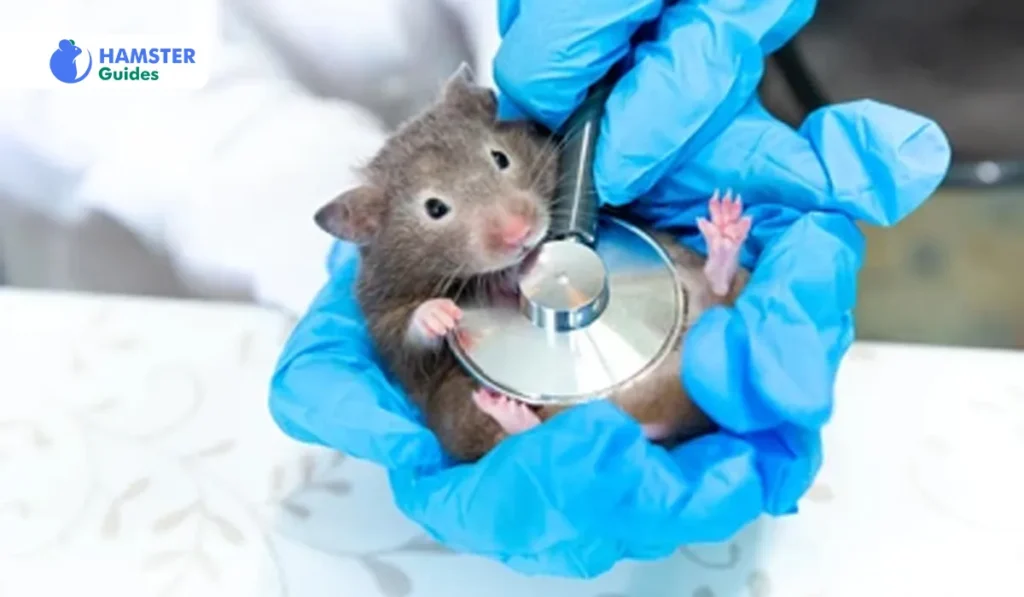
Illness In Gansu Hamsters: Even with the greatest intentions, hamsters can get sick. It is critical to be informed of common illnesses, including wet tail disease, dental problems, and infections in the respiratory tract. Symptoms of these disorders may include changes in attitude or hunger, tiredness, and breathing difficulties.
Indications Of A Fit Hamster: Assessing your pet’s health requires careful observation of their look and behavior. Positive signs include shiny fur, sparkling eyes, and energy. Consistent food and beverage habits, proper cleaning, and an energetic disposition indicate healthiness.
When Should You Contact A Veterinarian?
Expert help is necessary in certain situations. It is critical to seek veterinarian care if you observe an abrupt drop in weight, diarrhea, chronic lethargy, or breathing issues.
A licensed veterinarian can correctly identify the problem and administer the required care to guarantee the health of your Gansu hamster.
The Final Words
The Gansu hamster is a unique breed of miniature animals with unique qualities and endearing attributes, This species represents a distinct combination of stature, disposition, and maintenance needs. Knowing their behavior makes it clear that they are lonely animals that enjoy the night for their daily exploits due to their expert digging abilities, curiosity, and kind disposition. They are fascinating partners that require gentle handling and patience to prosper.









Leave a Reply